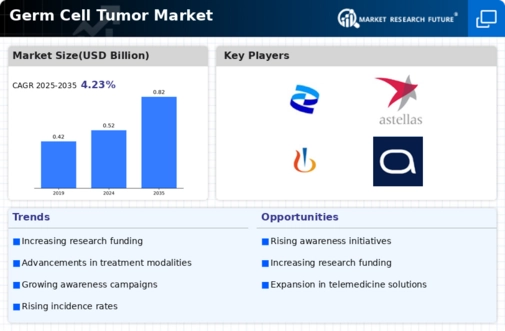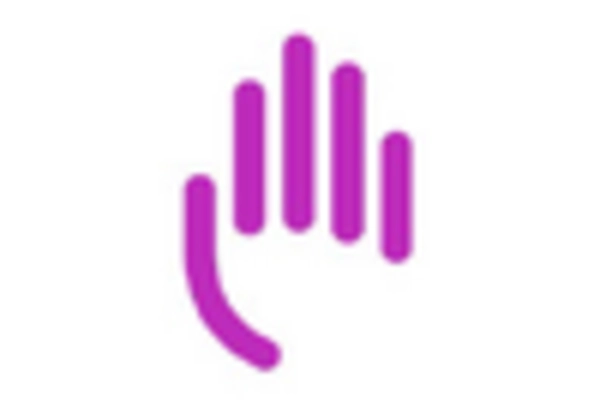Advancements in Treatment Modalities
Innovations in treatment modalities are significantly influencing the Germ Cell Tumor Market. Recent developments in chemotherapy, radiotherapy, and surgical techniques have enhanced patient outcomes, leading to higher survival rates. For instance, the introduction of targeted therapies and immunotherapies has shown promise in treating resistant cases, thereby expanding the treatment landscape. The market is projected to grow as these advancements become more widely adopted, with an estimated increase in the market size by 5-7% annually over the next few years. This evolution in treatment options not only improves patient prognosis but also drives investment in research and development within the Germ Cell Tumor Market.
Growing Incidence of Germ Cell Tumors
The rising incidence of germ cell tumors is a pivotal driver for the Germ Cell Tumor Market. Recent statistics indicate that germ cell tumors account for approximately 2-3% of all cancers, with a notable prevalence among young adults and adolescents. This demographic trend suggests an increasing patient population, which may lead to heightened demand for effective treatment options. Furthermore, the awareness surrounding these tumors has improved, prompting earlier diagnosis and intervention. As healthcare systems adapt to these trends, the Germ Cell Tumor Market is likely to experience growth driven by the need for innovative therapies and supportive care solutions tailored to this unique patient group.
Investment in Research and Development
Investment in research and development is a fundamental driver for the Germ Cell Tumor Market. Pharmaceutical companies and research institutions are increasingly focusing on understanding the biology of germ cell tumors, which has led to the discovery of novel therapeutic targets. This influx of funding is likely to accelerate the development of new drugs and treatment protocols, enhancing the overall market landscape. With an estimated increase in R&D spending by 10% in the coming years, the Germ Cell Tumor Market stands to gain from the introduction of innovative therapies that address unmet medical needs and improve patient outcomes.
Regulatory Support and Policy Initiatives
Regulatory support and policy initiatives play a vital role in shaping the Germ Cell Tumor Market. Governments and health authorities are increasingly recognizing the need for comprehensive cancer care, leading to the implementation of policies that promote research, funding, and access to treatment. Initiatives aimed at reducing the burden of cancer, including germ cell tumors, are likely to enhance the market environment. For instance, streamlined approval processes for new therapies and increased funding for cancer research can facilitate quicker access to innovative treatments. This supportive regulatory landscape is expected to foster growth within the Germ Cell Tumor Market, ultimately benefiting patients and healthcare providers alike.
Increased Awareness and Screening Programs
The surge in awareness and screening programs for germ cell tumors is a crucial driver for the Germ Cell Tumor Market. Educational initiatives aimed at both healthcare professionals and the public have led to earlier detection and diagnosis of these tumors. As awareness increases, more individuals are likely to seek medical advice, resulting in a higher number of diagnosed cases. This trend is supported by various health organizations that advocate for regular screenings, particularly in high-risk populations. Consequently, the Germ Cell Tumor Market is expected to benefit from the growing demand for diagnostic tools and treatment options as more cases are identified and treated promptly.


















Leave a Comment